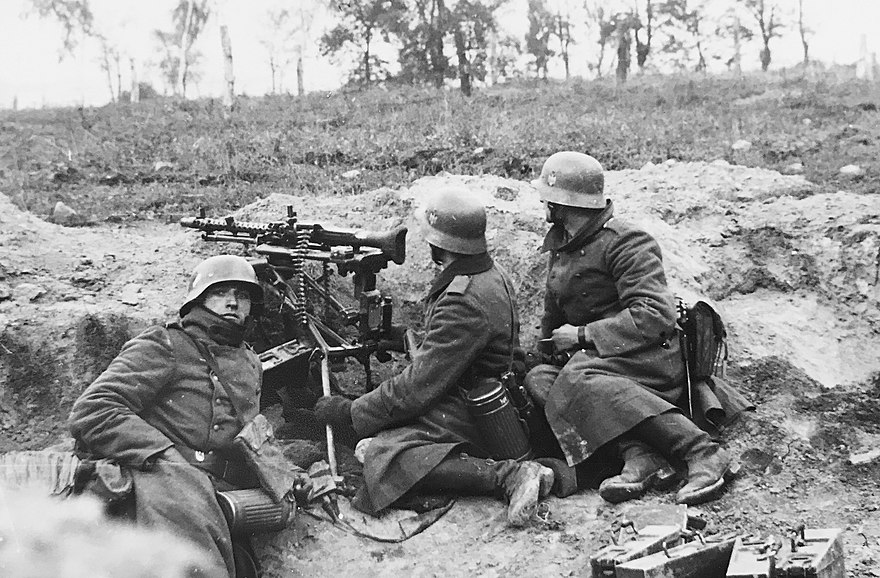
In a recent game, my opponent said something like this: “This is a 6 +1. Basically, a four even shot.” To be fair, I have heard this said far and wide by players at all skill levels. Let’s look and see how accurate this really is. For this discussion, we will ignore cowering. Let’s get stuck in.

Shifting Left, Positive DRM
Examining the IFT table above, it is easy to spot why people think of a +1 DRM as equivalent to a one column shift to the left. On a 8 column shot, an Original DR of 7 yields a NMC (with the +1 DRM included). On the 6 column, the same Original 7 yields a NMC (with the +1 DRM IGNORED due to shifting). For this shift, the approximation holds up pretty nicely.

For those still clinging to the belief a +n DRM is the same as a +n column shift to the left, consider a 12 +2 shot. The believers would say this shot is essentially a 6 even shot. Comparing an Original DR 2 on both columns. The Final DR is a 4. A 4 on the 12 column is a 3MC. A 4 on the 6 column is a 2 MC.
Don’t be fooled. The shots aren’t equivalent just because the same DR yields a NMC on each column. The lower end of the bigger column will almost always be more dangerous than the smaller column. This is especially true when shifting more than one column.
Shifting Right, Negative DRM
By now, you can probably expect these shifts are also not equivalent. The possibility of a 1KIA or more significantly increases with negative DRM. Consider a 6 -1 shot. An Original DR 2 is a 2 KIA on the 6 column. There is no 2 KIA when considering an 8 even shot. More clearly, on the 6 -1 there is 1/12 chances to get a 1 KIA or better. On the 8 even shot, there is only 1/36 chances to get only a 1 KIA. If we extend this to include the K/# result, a 6 -1 yields a 1 in 6 chance of a K/2 or better. An 8 even yields a 1 in 12 chance for a K/3 or better.

It significantly increases the potential for havoc when applying negative DRM to IFT die rolls. The lower the Original DR is, the more possible havoc there is. The more negative DRM that applies, the greater the risk. I know this does not surprise many, but do yourself a favor and stop thinking in terms of column shifts. Doing so blinds you to the increased danger you already assume is there. It’s way worse than you think!
Conclusion
I know this article feels a little pedantic. In some aspects, it is, but I cringe every time I hear someone mention DRM and column shifts. Shifting the columns makes the original shots look a lot less deadly than they actually are, particularly when rolling low Original DR. If you’re one of those doing this, I hope this forces you to take a moment and think it through. Until next time. – jim


Yes, there usually are slight differences in the column shift, provided the differences are “above” the 1KIA. The IFT is built so that every other column, at least until it gets up in FP, inserts another result above the K/#, and increases its associated # to match that new #MC as needed. In those cases the KIA remains in the same place along with the K/# result. Some columns insert a second 2MC, others a new higher numbered MC. the PTC and the singular NMC are always stepping up one place, which in the higher columns, means less of a chance of that particular result once it’s over the “hump” at DR=7.
The odds are low on the instances where the “3 = a better MC”, with only 2 combinations on the dice nabbing that result.
The thing I think people miss is the dice can still roll a (1,1) no matter the DRM. If the DRM are +2 it isn’t nearly as punishing as if the DRM are -2. Thinking of the attack as a two column shift hides the fact an Original 2 can be so punishing. At least, that’s what tends “trigger” me when people speak about DRM in this manner.
This is kind of related to a similar situation I’ve seen discussed about calculating how to conduct an attack when you have options. Ex: It’s the Russian PFPh. A Russian 4-4-7 squad with an LMG is 3 hexes away from a German 4-6-7 squad in a scrub hex (0 TEM). Adjacent to the 4-4-7 squad and also 3 hexes away from the German squad is another Russian 4-4-7 squad which is CX. Do you make one combined attack on the German squad at 8+1 (assuming use of the IFT), or two attacks, one at 6 flat, and the other at 4+1? I think the correct answer is the 2 attacks, although it may be situation dependent based on other factors. I think that choice may seem counterintuitive to newer players. If you had two CX squads, I think the answer would change to 1 combined attack since you would have a 2 column shift but still only have a +1 DRM. I’ve seen a lot of time spend in games on making those decisions (probably guilty of it myself, although not as much now compared to when I was a newer player). If you really like numbers, I think Medrow’s article in The General, Vol. 22, No. 6, digs in to the details.
Paul,
Sorry to be slow to respond. I was on vacation in London with my family. WRT Medrow’s articles, if you click on the “Resources” link on the top of any page on my blog, you will find a link to the Medrow articles. IMO, they are the best articles ever written about ASL.
The Negative modified DR will ALWAYS yield a better result and won’t be a simple comparison, that’s why taking -2 shots in the open are so devastating as well as taking those unnecessary 1fp -2 residual FP shots.
Focusing on these “insignificant” residual attacks is key, as those are what you may have to run through…Here, we need to either draw fire into (+) TEM locations to minimize the risk or create the + DRM IN the Residual location such as OG via Inf/dispersed Smoke counters.
Also, choosing to add that 467CX to an attack to make it a 12 chart does nothing for you. Better to use him to move and possible be used to cause rout issues to the unit the 8fp attack that you make without the 467CX